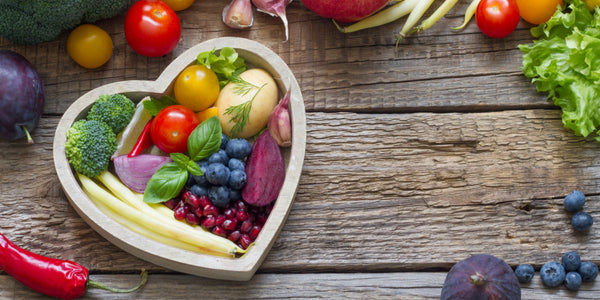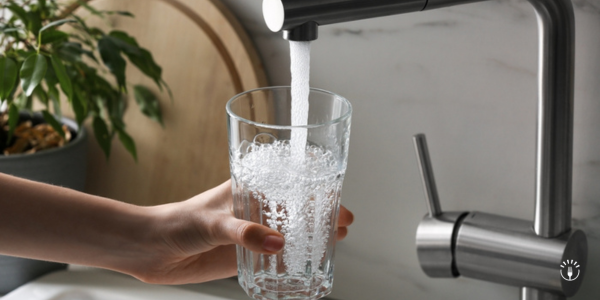
According to the American Heart Association (AHA), at least 68 percent of people ages 65 or older with diabetes die from some form of heart disease, in which 16 percent pass from a stroke.
Adults with diabetes are two to four times more likely to die from heart disease than adults without diabetes, though the AHA also considers diabetes to be one of the seven major controllable risk factors for cardiovascular disease.
Studies also report a positive association between hypertension and insulin resistance, a metabolic condition that increases the risk of diabetes. And when those have both hypertension and diabetes, which is a common combination, their risk for cardiovascular disease doubles.
A pattern of healthy eating for diabetics with high blood pressure, and even those with normal levels, can lower such risks and live to a healthier, longer life.
Balanced Diets for Diabetes and High Blood Pressure
Truly, the best diet for diabetes and high blood pressure is individualized based on the condition status and consists of healthy food choices.
However, there are general guidelines regarding balanced diets for diabetes and high blood pressure to help control blood sugars, pressures, and lipids.
Healthy food for diabetes and high blood pressure include whole grains, fruits and veggies, dairy products, lean and plant-based proteins, and healthy fat sources. There is also special attention to salt intake.
Whole Grains
Choose whole grains and wheat products over refined products, as they contain wholesome vitamins, minerals, and fiber that white and processed foods generally lack.
What’s more, products with refined flours and sugars can spike blood sugar levels only to dramatically drop. Fluctuations in blood sugars and poor control can lead to further complications, including heart disease.
Barley, oats, rice, and other whole grains rich in dietary fiber helps reduce cholesterol levels and heart disease risk, while likewise stabilizing blood sugars.
Vegetables
Vegetables are rich in fiber and other beneficial nutrients for a naturally low calorie cost.
Particularly when following a diabetic diet, vegetables are generally broken down into "starchy" and "non-starchy" varieties.
Starchy vegetables are higher in carbohydrates and generally thought to be avoided, yet their consumption can still be included in moderation. Starchy varieties include sweet potatoes, russet potatoes, corn, peas, squash, and pumpkin.
Choose non-starchy veggies for more "bang for your nutritional buck," as 1 cup of fresh or ½ cup of cooked, non-starchy veggies only contains approximately 25 calories and 5 grams of carbohydrate. Non-starchy veggies include asparagus, broccoli, carrots, cauliflower, celery, peppers, and salad greens.
Fruits
Fruits are often misunderstood and thought to be avoided due to their sugar composition. While fruits do contain sugar, they contain a natural sugar known as fructose.
When choosing fruits, go for whole fruits while considering these low-glycemic fruits for diabetics. Also try to skip out on juices, as they are often concentrated with additional sugars and lack fiber.
Dairy Products
Milk, cheeses, and yogurts contain lactose, a naturally-occurring sugar in dairy products. Dairy products are also excellent sources of calcium and provide ample amounts of protein.
When choosing dairy products, opt for lower fat varieties to reduce overall calorie and saturated fat content. Also pay attention to the ingredient and nutrition label, as yogurt varieties may be loaded with additional sugars.
Lean and Plant-Based Proteins
Though carb content is presumably the top nutrient in a diabetic diet, protein also helps stabilize blood sugars. Adequate protein in the diet also supports a healthy weight, in turn assisting in diabetes management and taking strain off the heart.
When choosing protein, select leaner cuts and assortments such as skinless chicken, turkey, and sirloin. Plant-based protein sources also supply dietary fiber and include beans, chickpeas, and soy-based products.
Healthy Fat Sources
Too much cholesterol in the body can result into a heart attack or stroke. However, dietary cholesterol may no longer may be a nutrient of concern and new research suggests a diet rich in saturated and trans fat can lead to high cholesterol and heart disease.
The American Heart Association recommends saturated fat limited to 7 percent of total calorie intake and trans fat limited to no more than 1 percent of total daily calories.
Nutrition experts encourage swapping out saturated and trans fats with healthier fat sources, including monounsaturated fatty acids (MUFAs), polyunsaturated fatty acids (PUFAs), and omega-3 fatty acids. Research suggests omega-3s can reduce inflammation and triglyceride levels, subsequently lessening the risk of heart disease.
Healthy fat sources include fatty fish, nuts and seeds, avocados, and extra virgin olive oil, which also shows to reduce after-meal blood sugar levels. Also go for leaner cuts of meats, including skinless chicken, turkey, and sirloin.
Salt Intake Recommendations
The Dietary Guidelines for Americans (DGAs) and American Heart Association both recommend no more than 2,300 mg (milligrams) per day and moving toward an ideal limit of 1,500 mg daily for most adults.
Sodium can naturally be reduced by choosing fresh produce and protein sources over prepackaged, processed foods. Salt consumption can be further decreased by rinsing off canned products before use and saying goodbye to the salt shaker at the dinner table.
Also stay cautious of dressings, condiments, and sauces, as they often house and hide a tremendous amount of salt. Spice it up in the kitchen with fresh or dried herbs and seasonings to naturally avoid sodium while amplifying favor.
Sample High Blood Pressure, Diabetes Diet Menu
Not only is this sample high blood pressure, diabetes diet menu balanced with nutritious foods, but full of flavor and variety!
Breakfast:
• 1 black bean omelet
• 1 cup berries, including blackberries, strawberries, and blackberries
Lunch:
• 1 serving of chopped chicken salad: Top 3 ounces of chopped chicken, 2 tablespoons of crumbled low-fat bleu cheese, ½ cup of chopped cucumbers, 1 tablespoon of chopped pecans and dried cranberries on 2 cups of chopped salad greens tossed with 2 tablespoons of vinaigrette
• 1 medium apple
Dinner:
• 1 cup sautéed broccoli with garlic and light drizzle of olive oil
• 1 serving glorious grilled potatoes
• 1 jalapeño turkey burger
Snack Options:
Snacking with or without diabetes is valuable for keeping blood sugars stable and curbing hunger, especially when a high-protein and fiber option is consumed.
Though needs vary based on a number of factors, including gender and activity level, snack on two or three of these options over the course of the day.
• ¼ cup of mixed nuts, including almonds, cashews, and walnuts
• ½ cup cottage cheese with ½ cup fresh pineapple chunks or peach slices
• 1 medium apple with 1 tablespoon of nut butter
• 1 cheese stick with ½ cup grapes
• 3 cups of plain, air-popped popcorn
• 1 cup carrot sticks dipped into 2 tablespoons of hummus
• 1 ounce beef jerky
• 1 ounce of pumpkin or sunflower seeds
• 6-ounces of non-fat, plain Greek yogurt with a ½ cup of berries
Trusting in a meal delivery service can also ensure tasty and healthy eating for diabetics with high blood pressure without the need of meal prep!









